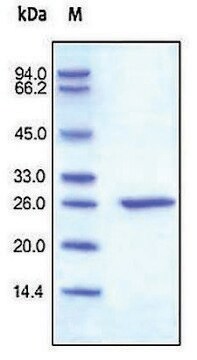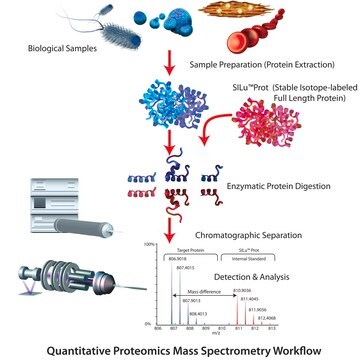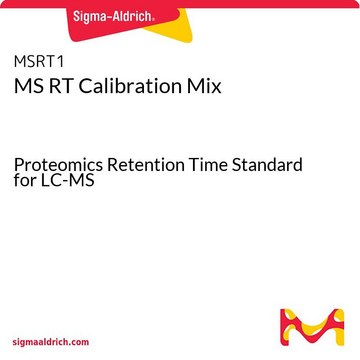MSST0022
SILu™Lite CRP C-reactive Protein human
recombinant, expressed in HEK 293 cells, MS Protein Standard
Synonym(e):
PTX1, pentaxin, pentraxin
About This Item
Empfohlene Produkte
Biologische Quelle
human
Qualitätsniveau
Rekombinant
expressed in HEK 293 cells
Assay
≥98% (SDS-PAGE)
Form
liquid
Methode(n)
mass spectrometry (MS): suitable
Eignung
suitable for mass spectrometry (internal calibrator)
UniProt-Hinterlegungsnummer
Lagertemp.
−20°C
Angaben zum Gen
human ... PTX3(5806)
Allgemeine Beschreibung
Suggested Quantitative Analysis Parameters
(MRM settings provided for three suggested peptides)
Biochem./physiol. Wirkung
Sequenz
Physikalische Form
Rechtliche Hinweise
Lagerklassenschlüssel
10 - Combustible liquids
WGK
WGK 1
Flammpunkt (°F)
Not applicable
Flammpunkt (°C)
Not applicable
Analysenzertifikate (COA)
Suchen Sie nach Analysenzertifikate (COA), indem Sie die Lot-/Chargennummer des Produkts eingeben. Lot- und Chargennummern sind auf dem Produktetikett hinter den Wörtern ‘Lot’ oder ‘Batch’ (Lot oder Charge) zu finden.
Besitzen Sie dieses Produkt bereits?
In der Dokumentenbibliothek finden Sie die Dokumentation zu den Produkten, die Sie kürzlich erworben haben.
Unser Team von Wissenschaftlern verfügt über Erfahrung in allen Forschungsbereichen einschließlich Life Science, Materialwissenschaften, chemischer Synthese, Chromatographie, Analytik und vielen mehr..
Setzen Sie sich mit dem technischen Dienst in Verbindung.







